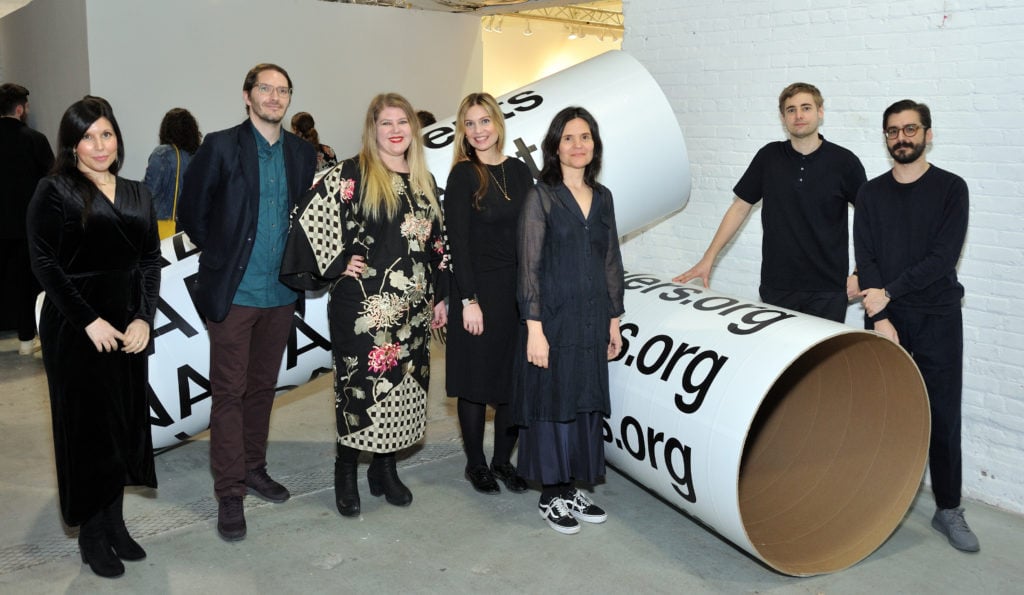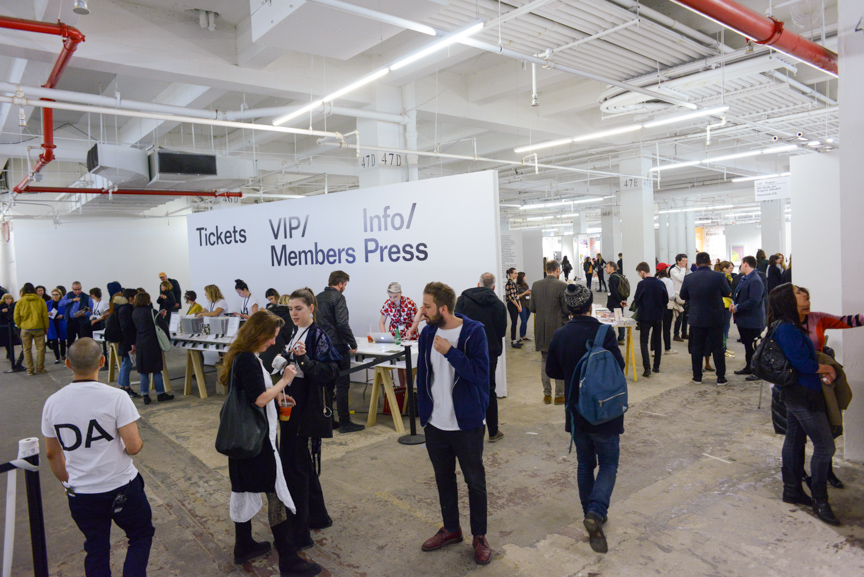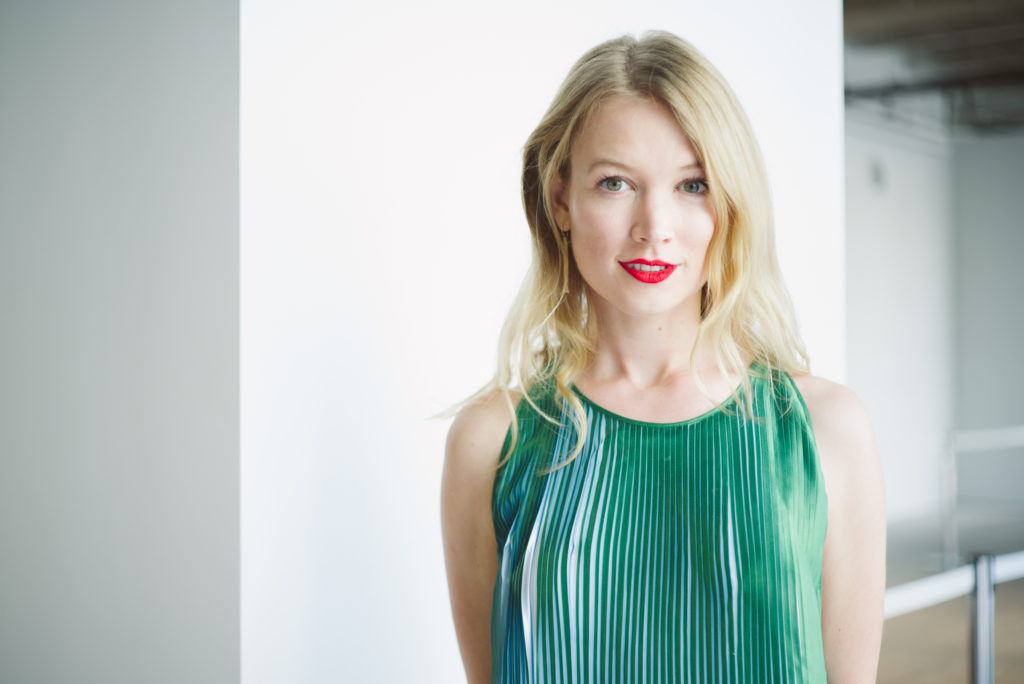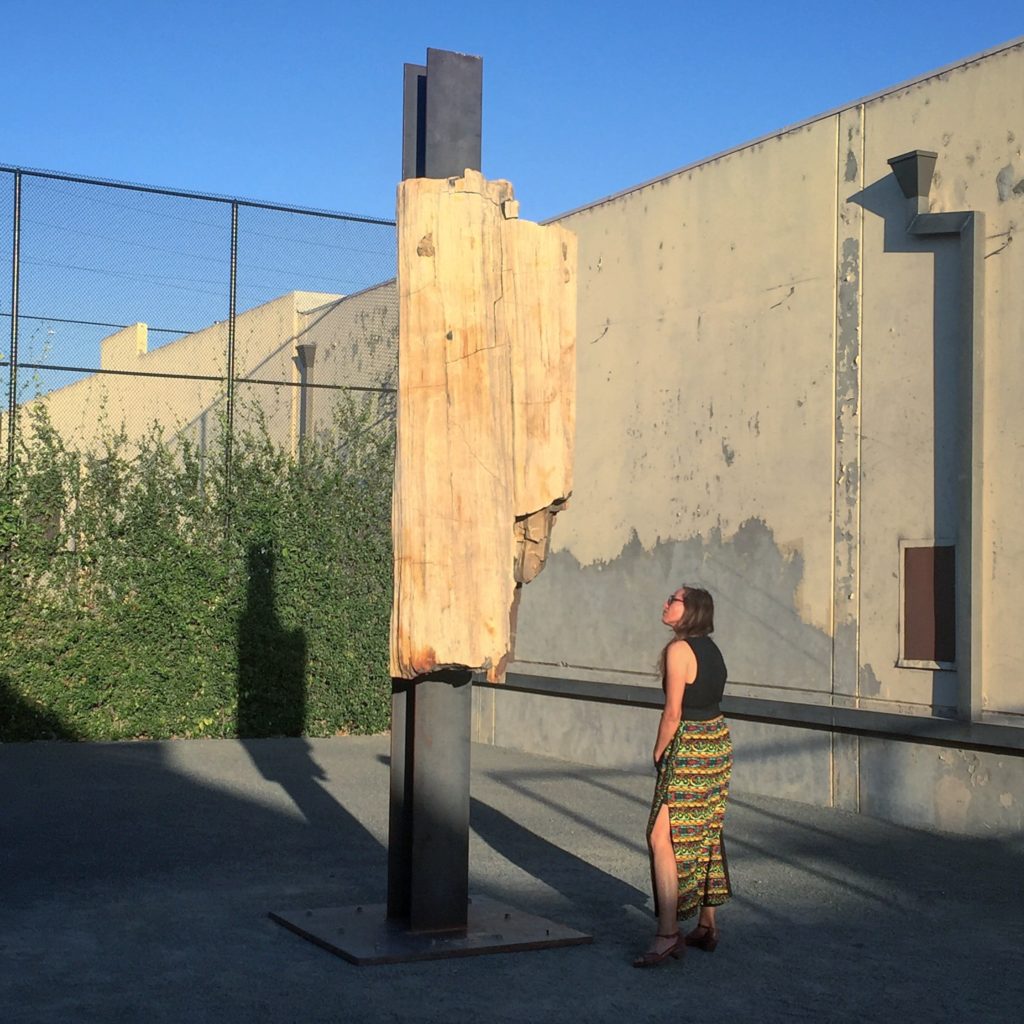Opinion
The Gray Market: Why Canceling NADA New York Feels Like Ending More Than ‘Just Another Fair’ (and Other Insights)
Our columnist on the cancelation of NADA New York, a social-media gut check, and art as a symbol of gentrification.

Our columnist on the cancelation of NADA New York, a social-media gut check, and art as a symbol of gentrification.

Tim Schneider

Every Monday morning, artnet News brings you The Gray Market. The column decodes important stories from the previous week—and offers unparalleled insight into the inner workings of the art industry in the process.
This week, locating how art issues align with the bigger picture…
On Wednesday, my colleague Eileen Kinsella reported that the New Art Dealers Alliance (NADA) had cancelled its 2019 New York fair. In a statement, NADA said that, after “extensive conversations with members,” its board had instead “decided to dedicate additional resources to gallery programming during the March Art Week… with the ultimate aim of increasing both foot traffic and visibility of gallery exhibitions among its members.”
The policy shift will make next year the first since 2012 in which NADA has not held a fair in New York. NADA Miami will take place as usual, running from December 6 to 9 at Ice Palace Studios.
I reached out to a NADA spokesperson on Friday to ask if there was any additional information available about specific replacement events. But beyond highlighting a focus on “collaborative programming across the city,” they declined to provide further details.
As of my writing, then, our best leads on NADA’s upcoming New York moves reside in the deeper reaches of the press release. There, the organization calls attention to “Close Quarters,” an off-site exhibition staged on Governors Island last month. The statement defines the event as “a sign of what’s to come, as NADA is currently exploring new partnerships to produce sustainable alternatives for exhibiting artworks both in and beyond New York.”
NADA also teamed this hint with its intention “to open a public gallery space of its own to host exhibitions from members based outside of New York City”—a tantalizing prospect that some galleries have pursued independently before now.
Since it would be unfair to speculate any further about the specifics, let’s focus on the experiment in public perception that NADA’s announcements set up.
Although the calls have intensified this year, people in most, if not all, facets of the industry have been saying for some time that there are simply too many art fairs in the current ecosystem. (I wrote my first extended analysis of the problem almost two years ago, and I certainly wasn’t the first to address it.) Lately, the idea of finding “collaborative solutions” has also received more lip service than this summer’s popsicle supply.
In light of all that, there’s an argument that NADA is killing two birds with one stone here: closing down one trade fair in an overcrowded sector and simultaneously replacing it with exactly the kind of cooperative programming that so many in the art market seem to support.
And yet, from what I can tell so far, news of NADA New York’s cancellation has sent a low rumble of dread through some of the more modest tiers of the art industry.
So what gives?

Inside the 2017 edition of NADA New York at Skylight Clarkson Square in Manhattan. Photograph by Casey Kelbaugh.
I think there are three factors at work here, and two of them are just plain old human nature. First, I suspect some people are exasperated about NADA New York’s cancellation because of the great unknown. It’s always scarier to lose something when you don’t have a clear sense of what, if anything, will replace it. And since it sounds like the organization is still thinking through its next steps, there’s a lot of open space for worst-case scenarios to run amok in the minds of its members.
Second, in terms of calling for fewer art fairs, it’s usually easier to take a bold stance on ideas while they’re just ideas. I know more than a couple of white liberals who threatened to move out of the country if Trump got elected president. Today, almost 20 months after inauguration day, guess what? They’re all still here.
Almost any gallerist faces a similar situation when it comes to reducing the size of the art fair sector. As an abstraction, it’s a grand, galvanizing concept. But when the specific events play out in a way that could mean losing a fair that’s real and meaningful to you, ideological positions can soften quickly.
By my count, NADA’s member galleries hail from 33 cities outside New York State. Given the centrality of both Gotham and art fairs to contemporary art sales in 2018, losing a fair during New York’s March Art Week could seem more alarming to these farther-flung dealers than returning home to find their doorstep occupied by a jack-o’-lantern with a machete slammed through it.
Still, it feels like perhaps the most important part of the equation has to do with the specific character of NADA’s fairs. They are the only ones in the US that I’ve heard or read exhibitors talk about in terms of a community rather than a commercial necessity—an element that probably owes in no small part to NADA’s status as a multi-faceted nonprofit art organization rather than simply a for-profit fair organizer.
Among other forms of tangible support for its members, NADA has in the past negotiated special hotel rates for exhibitors during fairs, made a point of keeping its booth prices consistent and accessible, and pursued ways for constitutents to pool their resources, such as consolidating shipping for special events.
In that sense, it may be reductive to think of NADA New York as “just another fair”—at least for the organization’s members (and other galleries who hope to join them). It’s probably wiser to consider the now-departed event a best-case scenario for a format that has begrudgingly become essential to brick-and-mortar art sellers in the 21st century.
None of this is to say that NADA’s replacement programming can’t or won’t be a forward-thinking improvement on the New York fair. But maybe the initial response I’ve heard to its disappearance offers a framework for understanding why, in the immediate aftermath of the announcement, some might see it more as a vacancy than a victory.

Elena Soboleva, David Zwirner’s first Online Sales Director. © Gesi Schilling. Image courtesy of David Zwirner.
On August 3, my colleague Henri Neuendorf reported that Elena Soboleva, formerly head of special projects at Artsy, will join David Zwirner as its first-ever online sales director. The hire continues Zwirner’s push to supercharge its robust physical operation with an increasingly robust digital one.
Although Soboleva was responsible for curating ambitious programming like Artsy’s annual pop-up exhibitions at Art Basel Miami Beach, much of the coverage around her move to Zwirner has defined her first and foremost as a social media influencer. And while she certainly has the connections and the résumé to justify the “influencer” designation within our industry, Soboleva’s online presence also sets up an interesting comparison between the art market’s reach and the reach of one of its nearest neighbors.
As of my writing, Soboleva has about 17,500 followers across Instagram and Twitter. In contrast, a recent (paywalled) post on Business of Fashion noted that a “well-known fashion influencer” might have more than 800,000 followers.
That wasn’t a typo, ladies and gentlemen. Eight. Hundred. Thousand. From a raw numbers standpoint, then, a tastemaker focused on runway shows might be separated from one of their peers focused on gallery shows by an order of magnitude (or more).
Now, an online following the size of Soboleva’s could still earn a fashion personality a seat at the table. That seat would just need one of those booster mechanisms for kids. Because in general, racking up between 15,000 and 100,000 followers in fashion merely qualifies you as a “micro-influencer”—someone who, according to the same Business of Fashion post, “many experts think are valuable in aggregate,” but not necessarily as individuals.
To be clear, I think Soboleva is an interesting choice for Zwirner, and potentially a very good one. In the low-volume, high-value art economy, getting the right people interested in what you’re doing is vastly better than getting the most people interested in what you’re doing, and she certainly has a strong track record in that respect.
But through another lens, Soboleva also represents proof positive that, in 2018, the arts are still a nook in the larger world’s theater. And if mega-galleries have mass-market ambitions, as I increasingly believe they do, a quick social media face-off shows just how much work they have ahead of themselves if they want to go fully mainstream.

Carol Bove, Love Fashions the Sidereal Body of the One in the Image and Likeness of the Other, 2014, in the courtyard of Maccarone Los Angeles, now one of the few remaining galleries in Boyle Heights. Photo by Tim Schneider.
Finally this week, on Wednesday, Carolina Miranda updated the art world on the latest twists and turns in the saga of Boyle Heights, the Los Angeles neighborhood where protest groups have been targeting galleries and arts nonprofits in an attempt to slice off the head of the gentrification snake before it can nest east of the LA River.
Although the most visible faction in this confrontation is the Boyle Heights Alliance Against Artwashing and Displacement (BHAAAD), various protesters with various affiliations have used tactics ranging from marches and boycotts to (allegedly) vandalism and death threats, all to try to drive out what they see as a horde of colonizers brandishing contemporary art to drive them from their homes.
This year alone, five spaces in Boyle Heights have announced that they are either closing down or moving elsewhere (though not necessarily because of community pressure): MaRS (Museum as Retail Space), Venus Over Los Angeles, 356 S. Mission, Chimento Contemporary, and UTA Artist Space. This leaves Nicodim Gallery, Maccarone, and a few scattered others as the final remaining holdouts in the once-bustling Boyle Heights mini-district known as the Flats.
I’ve been following this saga relatively closely, particularly since I lived in Los Angeles for most of it. I never fully understood why BHAAAD and its allies chose to target galleries, since galleries are pretty clearly a symptom of the gentrification cycle, not the cause. I always thought that trying to stop the redevelopment process by pushing out art spaces was like trying to halt the aging process by ripping out every new gray hair: maybe it looks better from the outside for a while, but it’s not solving the underlying problem.
Gentrification is complex, but it usually hinges on proximity to other in-demand real estate. Case in point: Boyle Heights became a temporary haven for galleries and arts nonprofits only after developers transformed the Arts District—a zone of downtown Los Angeles with a long history of scrappy artistic innovation—into a gleaming haven of artisanal brunch spots, boutiques, live/work lofts, and yes, a few galleries. (Personally, I remember thinking there was no going back once the massive new Urth Caffe touched down on Hewitt and Fifth like a yuppie mothership.)
However, Miranda’s piece offers a fascinating retort to this strict line of logic. A former member of the protest group Defend Boyle Heights says of the anti-gallery effort, “We have to put our focus where we think we can win.… We are limited in personnel and in what we can do.” Miranda’s conversations with other activists lead her to the following conclusion:
The protests against galleries have kept the issue of gentrification top of mind, generating media coverage that a demonstration on the steps of City Hall simply could not. (Plug the words “Boyle Heights” into Google and “gentrification” immediately pops up as a suggested term.)
In this sense, the art world occupies a strange kind of Goldilocks zone in the current sociocultural climate: small enough on the ground to make for a beatable antagonist, but large enough in the public imagination to deliver a message about something much bigger, more abstract, and less glamorous.
Would this have been the case in an earlier decade, before pop stars were doing pop-up gallery shows, famous actors were investing in art startups, and knee-buckling auction records were being reported in mainstream news outlets? Personally, I’d answer that question the same way as if you asked me whether kids hoping Santa will show up throw tire spikes into their chimneys on Christmas Eve.
So could the strategy of BHAAAD and other groups actually save Boyle Heights residents from displacement? I tend to agree with Miranda, who writes that “even as the closures might seem to mark a turning point for the neighborhood’s anti-gentrification battles, larger development issues loom on the horizon—issues that will not be resolved even if every gallery in Boyle Heights were to immediately pack up and leave, and issues that, for now, BHAAAD has largely not addressed.”
Still, it speaks volumes about art’s place in the world that targeting galleries has been this effective in raising awareness about an issue that has been so easy for so many privileged parties (like me) to overlook for so long.
That’s all for this edition. The Gray Market will be on hiatus next week, but will be back in full force the week after. ‘Til we meet again, remember: Not every place is for everybody.